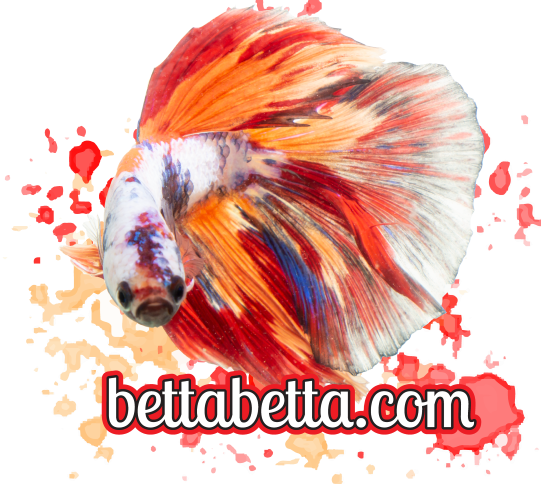A Siamese fighting fish can be a tough case to deal with. Not only that, but they place high demands on you as a keeper in certain areas. If you want to know what this fish and its peculiarities are all about, you can get answers to your questions here.
General Information
The fighting fish mostly comes from Thailand and Cambodia. It appeared in Europe for the first time in 1892. But its breeding goes back much further. More precisely by several centuries: Betta splendens, their scientific name, was bred in their home country for shows and, above all, competitions.
The wild, original fighting fish is mostly reddish or brown and has flag-like fins. In contrast to their breeding form, these are relatively short, so that the fish can swim well and persistently. Cultivated forms come in all imaginable colors and new color variants are constantly being added. Basically, Bettas are 5 to 7 cm tall and reach an age of around 4 years. A specialty of these fish is their belonging to the labyrinth fish. These fish species have the so-called labyrinth organ, which allows them to absorb atmospheric oxygen from the air. They are therefore able to survive in relatively warm and therefore oxygen-poor water.
Where does their name come from?
Bettas are strongly territorial and do not tolerate intruders. Depending on their nature and temperament, they react extremely aggressively in such cases. Male rivals are fought to the death (even more in aquariums than in nature, because the inferior cannot escape). Females are also harassed, but for courtship and mating purposes. This can be so stressful for the female animal that it dies. There are even cases where Betta males attack their own reflection. However, this district defense is not only aimed at members of the same species. Other fish – particularly colorful species or those with long fins – are also attacked.
Game and Breeding Form
In today’s Betta types, a distinction is made between the wild and the cultivated form. The wild form – short fins with mostly “simple” colorations – may be suitable for keeping with one or two conspecifics, as they are less aggressive than the breeding or “top form”. This requires above all a larger tank – at least 54 l – and the constellation, one male plus two females. Here too, however, there is permanent stress for the fish, which can sometimes significantly reduce life expectancy. The breeding form differs not only from nature but also from the outside of their original counterparts. They are characterized above all by their long fins, which are pulled behind them like a veil.
 Picture from Daniella Vereeken
Picture from Daniella Vereeken
Their Attitude
Basically, the Betta is a good fish to keep even for beginners. They make little demands on their pool – both in size and in terms of the desired water values. It only requires a temperature of around 26 ° C, plus a pH value between 6 and 8 and a total hardness between 5 and 15. Since it occurs in still water in its home country, no artificial current should be installed.
Now on a topic where opinions differ: the required aquarium size.
Basically you should choose a tank with a size of at least 54 l and an edge length of around 60 cm for a fish of this size. However, especially in fighting fish, the keeping is described in much smaller Nanos, which have a volume of about 30l. We do not recommend this. For one simple reason: in such a pool, it is difficult to achieve and maintain stable water values. With the larger capacity of the aquarium, constant good water quality is more likely to be achieved. The fighting fish also needs them. The keeping in smaller tanks in rare exceptional cases is therefore reserved only for extremely experienced aquarists.
Siamese Fighting Fish’s Ideal Pool
The establishment of the basin is not a complicated matter: The substrate should consist of fine gravel, which must not be too bright. The planting is ideally quite lush and therefore offers the fish enough hiding places; a siamese fighting fish likes to burrow through a real jungle of plants. However, one should not use so many floating plants that the fish can no longer find a free surface to breathe.
The technology is also quickly brought together: You need a good filter, a heating element, and the right lighting, which should not be too bright: a Siamese fighting fish likes it a bit dim. This also ensures that the air above the water is not significantly colder than the water temperature: This ensures that the fish do not cool down when breathing. It is best to combine the lighting with a suitable cover: some bettas like to jump.
For a more pleasant experience, filters are also preferred for the ideal pool.
Feeding Them
A Siamese fighting fish is carnivorous in nature, so you should feed it with live or frozen food so that it gets a lot of animal protein. In addition, there are both special flake food and granulate variants for Bettas.
Successful Socialization
So that attempts to socialize do not become additional food units, you should pay attention to a few things when choosing the right fish: they must not be too small, otherwise, they are considered prey, and they do not show territory behavior (for example, typical of perch). In addition, they must not have large fins, as this triggers territorial behavior in a Betta (such as long-finned guppies). Last but not least, they must not be too lively (like many bearlings), as this creates additional stress for the Bettas. On the other hand, many catfish and calm schooling fish are suitable for socialization.
 Photo By: Dunkelfalke
Photo By: Dunkelfalke

![Siamese_fighting_fish_(Betta_splendens)_female_orange[1]](https://bettabetta.com/wp-content/uploads/2020/06/Siamese_fighting_fish_Betta_splendens_female_orange1-696x522.jpg)
